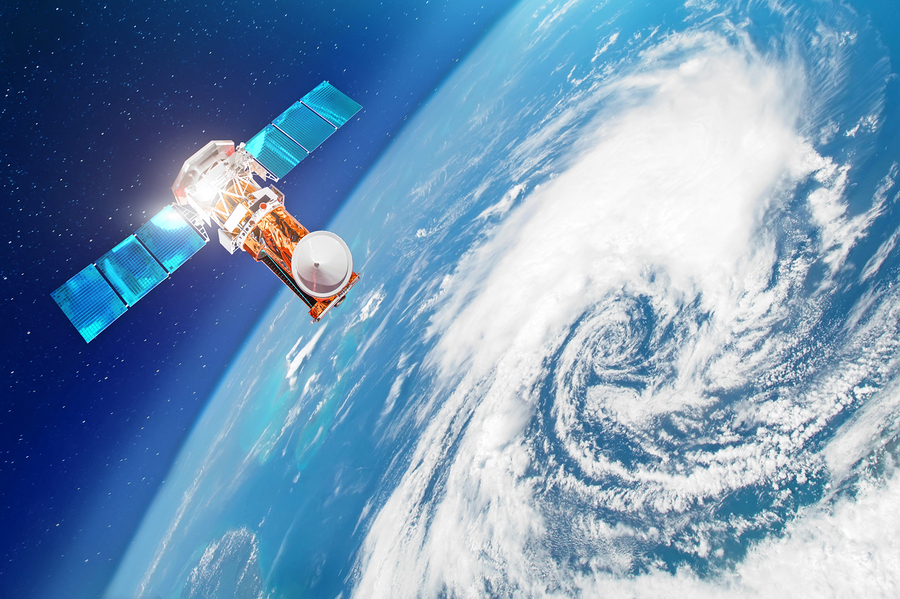After MetOp-A and MetOp-B, launched in 2006 and 2012 respectively, on November 7, 2018, MetOp-C successfully completed a flight on board the Russian Soyuz rocket from the French station of Kourou. On board are nine instruments, including the IASI – a little technological gem – which will carry out a long-term mission (climate change) and a short-term mission (identifying and quantifying chemical substances).
MetOP-C: the last of the siblings
To put into perspective the launch of MetOP-C (short for Meteorological operational polar satellite), it is part of a program of applied meteorology, developed by the European agency Eumetsat, responsible for weather satellite systems in Europe. This third and last satellite now orbits the Earth at an altitude of 811 kilometres at the poles and its six daily passages covering every point of the planet are a prerequisite to carrying out the mission of the Infrared Atmospheric Survey Interferometer (IASI), an optical measuring instrument with an advanced computer, whose radiometric imager can capture images with a resolution of about one kilometre.
Quantifying chemical substances
The short-term mission of IASI is to identify and quantify – both day and night, and sea and land – every major parameter that has an influence on global warming such as chemical substances and gases. Therefore, this state-of-the-art instrument will measure the atmosphere’s humidity and temperature, ammonia, sulfur dioxide (from volcanic eruptions), whose smoke risks damaging aircraft engines, ozone (very harmful gas found in the lower atmosphere), carbon dioxide, whose concentration has increased by 5% in the last ten years, and atmospheric methane. Only two hours are needed for the collected information to be analyzed by a computer to provide more reliable weather forecasts and alerts in case of anomalies (volcanoes, pollution, etc.).
Studying climate change
Initially developed for a long-term mission, the IASI scans the globe in 15 km wide strips at a height of one kilometre twice a day to obtain the atmosphere’s spectrum from the decomposition of its rays. This information makes it possible to better understand the origin, circulation and evolution of various molecules. With this instrument it has been shown that gases and pollutants change between the troposphere (8 to 10 km) and the stratosphere (10 to 50 km), thereby leading the scientific community to revise its climate models. Furthermore, scientists rely heavily on IASI data to write their scientific works, estimated at more than 400 in the past ten years. This same data is also crucial to study and monitor climate change, from information related to the ozone layer, desert dust, greenhouse gases, clouds, etc.
With this last successful launch and with great expectations both for the accuracy of weather forecasts as well as for analysis of climate change, the scientific community hopes in the next decade to launch its latest generation of climate satellites. Metop-SGA and Metop-SGB are expected to join their colleagues in 2022 and 2029 respectively, at a cost of approximately $600 million Canadian.
